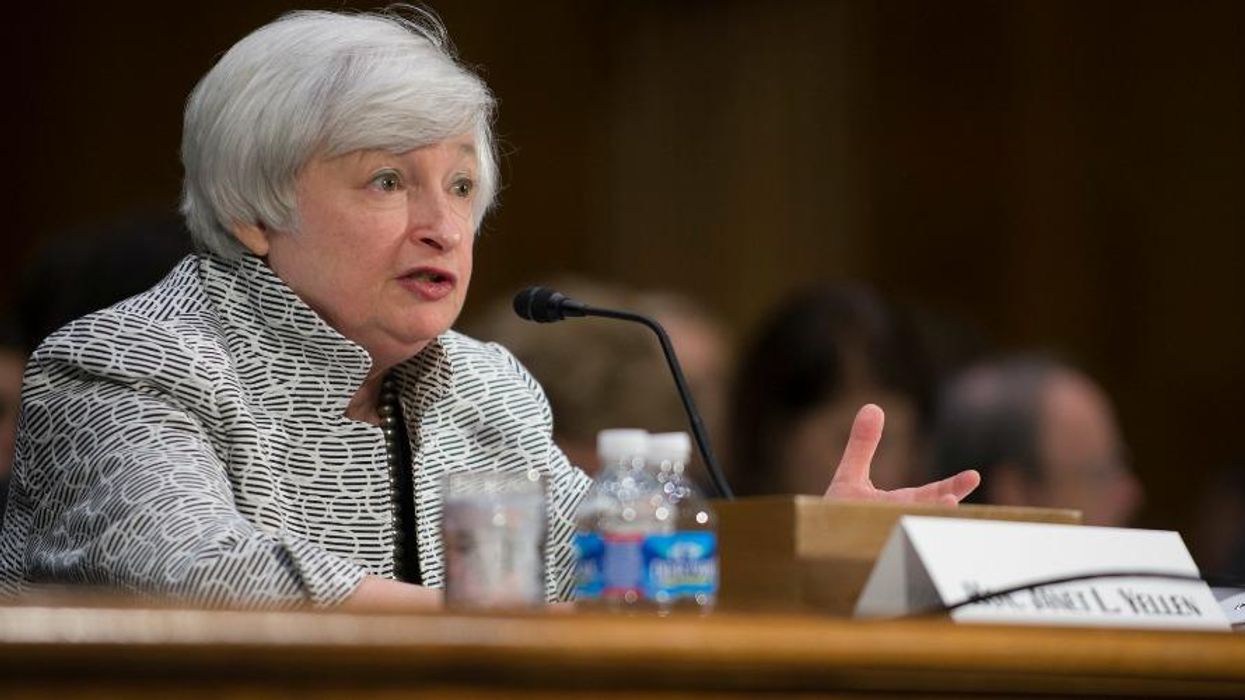
The debt ceiling is an artifact of pre-World War II fiscal policy. In the modern era, it makes no sense that Congress must separately authorize debt to cover spending it has already agreed upon.
Once, it was a quaint bit of Americana. Like the Electoral College, it's no longer charming.
Since the 2011 repeal of the Gephardt Rule—a sensible 1979 reform that allowed Congress to authorize spending and raise the debt limit in a single vote—the debt ceiling has become a cudgel. A party that seizes control of one branch of government—or even half a branch—refuses to raise the debt ceiling. The government is held hostage and a crisis ensues.
It has become a regular tool, unfortunately, for congressional Republicans.
Without genuine democratic reform, we'll be in the same place over, and over, and over again.
They brought the government within days of the "X date" (when the government cannot pay its bills) in 2011. The standoff led Standard & Poor's to downgrade the United States' credit rating. Then in 2012, the Treasury Department had to take "extraordinary measures" as it again approached the debt ceiling.
Indeed, Treasury Secretary Janet Yellen's extraordinary measures to keep the government open for a few more months aren't extraordinary at all—the Treasury has had to deploy them at least seven times since 2011.
Isn't this just political hardball? Yes, parties use whatever tools they have for an advantage. But it is nihilistic to constantly threaten to crash the economy as a negotiation ploy. As bad as all the standoffs of the last decade were, this one is likely to be worse. In 2011, Republicans had specific demands about budget cuts and strong party leaders empowered to make a deal on behalf of the caucus.
Today, the kooky fringe is in control. And, as Jonathan Chait writes in New York magazine, the right wing is "refusing to lift the debt ceiling unless Biden gives them... something. They have not decided what." Let's hope they decide before our government defaults on its debts, potentially triggering a global financial crisis.
As the Brennan Center noted in a day-long conference and series of writings a decade ago, all this reflects some fundamental flaws in our creaky governmental system. We have a Madisonian system of checks, balances, and veto points... and a polarized Western European party system. This new form of extreme obstructionism was relatively new, and we wondered what the consequences would be. In 2016, we found out: dysfunctional government produces populist passion and political strongmen. On this one, unfortunately, the United States was not even remotely exceptional.
Back then, numerous Republicans and conservatives joined our conference to discuss a way out. Now many of them have been drummed out of their own party. Once the debt ceiling threat was used to advance entitlement changes and tax cuts. Now it's a tool for insurrectionists and QAnoners.
How to address the polarization behind so much of this?
One answer is to bar partisan gerrymandering, as the Freedom to Vote: John R. Lewis Act did. Incumbents in hypersafe districts don't fear swing voters, they fear primary challengers. In the Republican Party, they especially fear challengers supported by dark money and billionaire-backed super PACs.
Counterintuitive steps can fortify our system against extortionist lawmakers. One is to bolster the role of political parties, as the Brennan Center has urged, by enabling them to raise more money than is currently allowed. Another is to strengthen the standing committees, which often are venues for bipartisanship (and substantive engagement). My colleague Maya Kornberg has an important new book on that very topic coming out in two weeks.
President Biden is right to stand firm. The Republicans must drop this wreck-the-economy threat. But we can't leave it there. Without genuine democratic reform, we'll be in the same place over, and over, and over again.

 1 year ago
46
1 year ago
46


